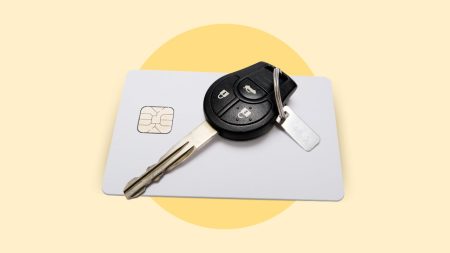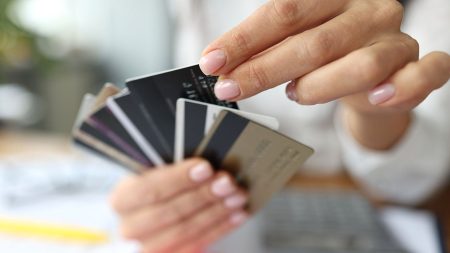Planning an international trip brings plenty of excitement — and plenty of questions about handling money abroad. Travelers often discover too late that exchanging currency at the airport means paying premium fees, sometimes losing 10 percent or more of their money to poor exchange rates and service charges.
Smart travelers know that managing money abroad takes more than just finding the nearest exchange counter. From knowing which ATMs won’t charge extra fees to having backup plans for emergencies, getting the most from your travel budget starts with understanding how currency exchange really works.
The best move: Exchange money before you leave
Most banks offer currency exchange services that beat airport rates by 5 percent or more. Working with your bank before departure not only saves money but provides peace of mind. You’ll know exactly how much foreign currency you’re getting, without surprises from hidden fees or unfavorable exchange rates.
Your local bank branch likely offers several advantages over airport kiosks or tourist-area exchanges. Many waive service fees for account holders and provide better exchange rates. Plus, you can order currency in advance, ensuring you have what you need when you land.
Common exchange mistakes to avoid
Many travelers lose money on currency exchange without realizing it. Airport kiosks prominently advertise “no fees” but make their profit on exchange rates marked up far above market prices. These seemingly small differences add up quickly, especially when exchanging larger amounts.
Watch for hidden costs
Banks regularly beat airport money exchange rates. If you’re exchanging $1,000, a 5 to 10 percent difference means an extra $50-100 in your pocket. Some exchange services also add service charges or commissions on top of their marked-up rates, further cutting into your travel budget.
Avoid dynamic currency conversion traps
When using credit cards abroad, merchants might offer to charge you in U.S. dollars instead of local currency. While this sounds helpful, it typically means paying an extra 3 or 4 percent through a practice called dynamic currency conversion. Always choose to pay in local currency to get your bank’s better rate for money exchange when traveling.
Skip hefty ATM fees
International ATMs often provide good money exchange rates but can charge hefty withdrawal fees. Some U.S. banks reimburse these fees, while others partner with international banks to reduce costs. Before traveling, find out which local banks work with yours to minimize ATM charges.
Smart money management abroad
Managing money in a foreign country takes more than just having local currency. Most seasoned travelers use a mix of payment methods, combining cash for small purchases with credit cards for larger expenses. This strategy protects you from theft and exchange rate surprises.
Big international cities often have branches of major U.S. banks. Cities like London, Paris and Tokyo maintain banking relationships that can help you access better exchange rates and avoid fees. Before departure, ask your bank about their international partners and ATM networks.
Even careful planning can’t prevent every problem. Keep some U.S. dollars as a backup — many countries accept them in emergencies. Store emergency cash separately from your main funds and know which local banks can handle Western Union transfers if needed.
How to exchange money safely
Currency exchange involves more risk than many travelers realize. Beyond poor exchange rates, some services operate without proper licenses or might even pass counterfeit bills to unsuspecting customers.
Legitimate money changers display current exchange rates prominently and provide detailed receipts. They operate from permanent locations, not temporary stands or street corners. If rates seem unusually good, proceed with caution — dramatically better rates often signal potential scams.
Count your money carefully before leaving any exchange service. Examine larger bills for security features, especially in countries known for counterfeiting. Keep transaction receipts until you’ve confirmed the currency is genuine and matches the amount you paid for.
Finding the best exchange rates
Exchange rates fluctuate constantly based on global markets. Major banks update their rates daily, while smaller exchange services might adjust rates several times per day. Understanding how these rates work helps you distinguish between good deals and expensive ones.
Bank vs. exchange service rates
Your bank’s exchange rate typically includes a 2 to 3 percent markup over the interbank rate — the rate banks use when trading with each other. Airport kiosks and tourist-area exchanges often mark up 8 to 10 percent or more. This difference may mean getting $920 worth of foreign currency for your $1,000 at a bank vs. $820 at an airport kiosk.
Timing your exchange
Exchange rates tend to move in cycles. While you can’t perfectly time the market, watching rates for a few weeks before your trip helps you understand normal ranges. Many banks let you lock in rates when ordering currency in advance, protecting you if rates move against you before departure.
Emergency currency solutions
Even careful planners sometimes need quick access to local currency. Whether your card stops working or you simply need more cash than expected, knowing your options prevents costly mistakes.
Most major cities offer several reliable options for emergency currency exchange:
- International bank branches
- Licensed money transfer services
- Hotel exchange services (though rates are usually poor)
- Credit card cash advances (expensive but reliable)
When things go wrong
Lost cards or stolen cash require immediate action. Keep your bank’s international service number handy — most can expedite emergency card replacement or help you access cash through partner banks. Some credit card companies also offer emergency cash advances to stranded cardholders.
Smart travel money checklist
Travelers often focus on getting the best exchange rate but miss crucial safety steps. Beyond just having local currency, protecting your money abroad demands practical preparation. Many tourists learn these lessons the hard way — through lost cards, frozen accounts or expensive emergency solutions.
Setting up your travel wallet
Most travel problems start with an overcrowded wallet. Take out membership cards, store loyalty cards and anything else you won’t need abroad. Your travel wallet should contain just the essentials:
- One primary credit card for main expenses
- One backup card stored separately
- Debit card for ATM withdrawals
- Small amount of U.S. dollars for emergencies
Keep photos of these cards stored securely — not in your phone’s regular photos. Many travelers email themselves encrypted copies or use secure cloud storage. If your wallet goes missing, having these details helps you act quickly.
Bank and card preparations
Call your bank about international ATM partnerships. Major U.S. banks often work with foreign banks to reduce fees. Ask specifically about:
- International ATM fees and reimbursements
- Daily withdrawal limits abroad
- Fraud department contact numbers
- Partner bank locations at your destination
Banks frequently freeze cards on first-time international purchases. Nothing ruins a meal faster than a declined card in a foreign restaurant. Setting up travel notifications prevents these problems and helps your bank spot actual fraud.
Backup access plans
Losing access to your money can derail any trip. Smart travelers keep backup payment methods separate from their main wallet. Consider carrying:
- Emergency cash in U.S. dollars
- Extra debit card from a different bank
- Prepaid travel card
- Mobile payment apps set up and tested
Test your online banking login from a private browser before leaving. Some banks require extra security steps for overseas access. Better to solve these issues from home than from a foreign hotel lobby.
The bottom line
Getting the best deal on money exchange when traveling requires balancing convenience with cost. While airport kiosks and tourist-area exchanges offer easy access to local currency, their high fees and poor exchange rates can significantly reduce your spending power.
Order currency from your bank before departure, understand which ATM networks offer fair rates abroad and always have a backup plan for accessing emergency cash.
Remember that no single approach works best in all situations. Successful travelers typically combine several methods: bank-ordered currency for immediate needs, credit cards for larger purchases and knowledge of local ATM networks for additional cash. Whatever strategy you choose, take time to understand fees and exchange rates before committing your money.
Frequently asked questions
Read the full article here










